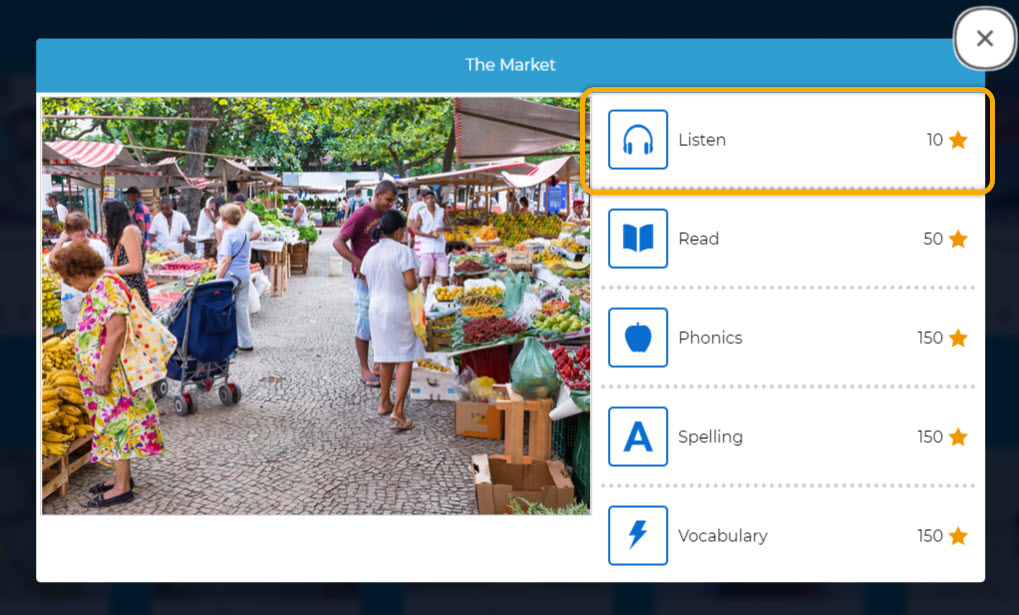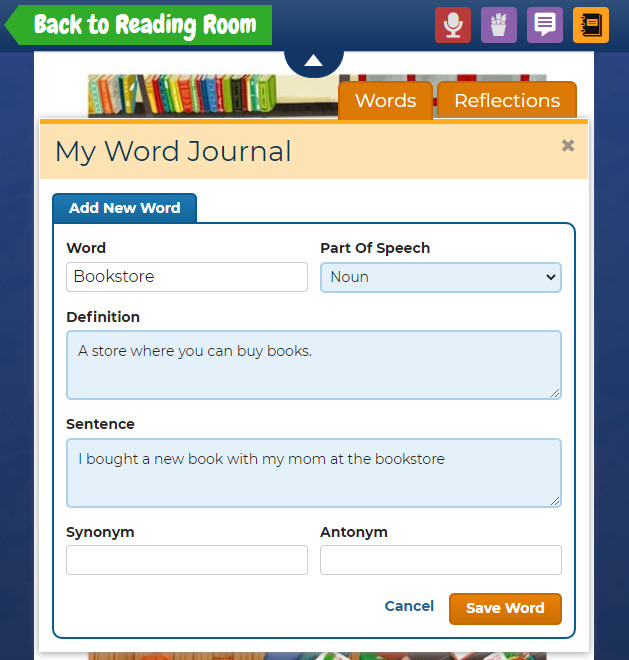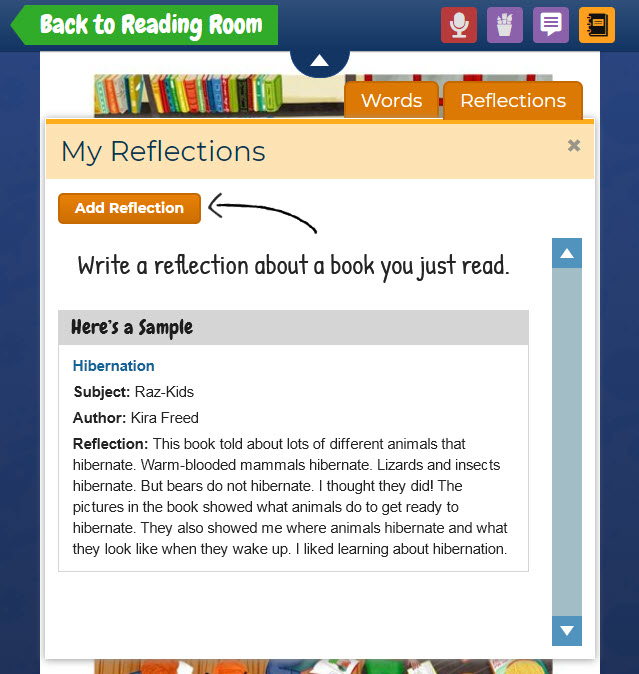As teachers, we’re in a constant search for classroom strategies that help foster curiosity in our students that will keep them on-track and motivated all year long. Inspiring curiosity is a conscious effort and is rooted in the foundational, routine steps we take every day. While it can seem like we have enough to do helping students settle back into school-mode after summer break, getting students curious about their studies doesn’t need to be a tremendous feat. Here are a few strategies I use to inspire curiosity in my classroom, create a welcoming environment, and foster a growth-oriented mindset.
Inspiring curiosity is a conscious effort and is rooted in the foundational, routine steps we take every day.
Establishing Classroom Expectations
When entering a classroom after a long summer break or following a big change, it can be easy for students to have trouble remembering what’s appropriate in the classroom. Like most school districts, we’ve experienced every form of in-person, virtual, and hybrid learning during the last few years. Since I’m a first grade teacher, this inconsistent classroom experience is the only one most of my students know. When there’s that much inconsistency in your day-to-day, it’s difficult to understand (and remember) classroom norms and expected classroom behavior. To establish these routines and habits, I make it a priority to model behavior. I purposely make mistakes such as forgetting to push in my chair or forgetting to raise my hand to show that everyone makes mistakes, and to encourage students to acknowledge the mistake and inform me of what the appropriate behavior should have been. This helps normalize appropriate behavior while also showing them that it’s okay to make mistakes, creating a safe place for taking risks in learning and making it easier to do more things outside of their comfort zones. Modeling is a great tool to help students learn by doing and recognize when something is out of alignment with what they’ve seen and been told is acceptable.
I purposely make mistakes such as forgetting to push in my chair or forgetting to raise my hand to show that everyone makes mistakes, and to encourage students to acknowledge the mistake and inform me of what the appropriate behavior should have been.
I also make it a priority to collaborate with my class early in the school year by making a list of classroom rules that illustrate what students and teachers should be doing in the classroom. This helps students understand how to act in different scenarios, and by displaying the rules on a classroom wall, students are given a daily visual reminder that reinforces the best behaviors conducive to learning.
Providing reinforcement and regular reminders also applies to establishing academic expectations. I make it a priority to get back to the basics with my students and show them that it’s okay if they need additional practice on a concept they learned last year. First graders today are going to know very different things than my first graders from five years ago knew. A lot has happened in those years. It’s a balancing act between where we need students to be by the end of the year and making sure they’re grounded in the basics to form the foundation to get them there. Don’t hesitate to take things a little more slowly by revisiting the basics to ensure that all students are grounded in the foundational concepts that’ll get you to your end-of-year academic goals.
Modeling is a great tool to help students learn by doing and recognize when something is out of alignment with what they’ve seen and been told is acceptable.
Using Daily 5 With Raz-Kids
Daily 5 is a literacy framework my district follows that encourages independent learning and student engagement. I’m big on giving my students choice, which is why I often pair my Daily 5 activities with Raz-Kids. I allow students’ curiosity to guide them in their reading choice to help them get more out of their practice and instill in them the joy of reading. Here’s how I pair the two together:

Listen To Reading
This activity involves providing students with an audiobook that’s read aloud to them while they have the written text directly in front of them. This allows students to hear the correct pronunciation of each word and simultaneously see how each word is written. The ‘Listen’ option within Raz-Kids provides this audio functionality and also highlights each word as it’s read aloud.
Read To Self
Allowing students to pick out their own independent reading content fosters curiosity and helps build lifelong readers, writers, and learners. The digital library available to them in the Raz-Kids Reading Room gives them access to countless books right at their reading level. They can choose from fiction, non-fiction, poetry, and humor, and they can even 'favorite' books to revisit later.

Word Work
Word Work activities encourage students to experiment with new words, identify spelling patterns, and memorize high–frequency words to further develop their speaking and writing skills. When reading in Raz-Kids, I have students add unfamiliar words to their Word Journals so we can review them together or add them to class spelling lists.

Work On Writing
The goal of Work On Writing is to develop storytelling and narrative abilities by way of independent writing. Whether students are writing a journal entry or a short story, they’ll have the ability to choose what they’re writing about, making it more exciting for them to participate. Oftentimes, we’ll use the Reflections feature within Raz-Kids to write about the book they just finished, what they learned, and what they liked about it. We may also use the Connections activities at the end of each book as writing prompts to extend the practice.
Read To Someone
Reading to another student or teacher makes a big difference in students’ reading comprehension, accuracy, and fluency, not to mention students get excited to share their progress with peers. This is a great way to increase student engagement as well as collaboration in the classroom. I like to encourage partner or small-group reading and have each student read a book they ‘favorited’ in Raz-Kids aloud to the group.
Daily 5 has helped my students develop confidence in their learning by encouraging independent reading and writing activities and gives them an opportunity to share with and learn from their peers.
Creating a Safe, Engaged Classroom
Building a welcoming, safe classroom community is essential to foster student engagement, curiosity, and a growth-oriented mindset. For me, the first step is to take time out of the day to have moments with my class that are not curriculum-based. These could be moments when you share things about your life or allow students to share things about theirs. For example, when I was pregnant last year, my students would ask me about my baby and tell me about their younger siblings or cousins who were just born. Something as simple as this has the potential to reassure students that this is a safe space where they are cared for and can feel comfortable. As students feel more comfortable in your classroom, they tend to become more eager to learn and try hard things because they know it’s safe for them to show up as themselves; and when they make mistakes, they know they’re in a safe space where they can continue learning with their community.
As students feel more comfortable in your classroom, they tend to become more eager to learn and try hard things because they know it’s safe for them to show up as themselves
I also use an app called ClassDoJo that gives students points for good behavior and provides growth mindset videos. In the videos, we watch a character go through different scenarios and then discuss what happened as a group using prompts like:
- Has that scenario happened to you before?
- How did you feel when something like this happened to you?
- How did you feel when you finally accomplished the thing you were trying to do?
Getting the class comfortable with open dialogue helps students connect with one another and makes the fear of getting something wrong feel less scary. It also helps to connect your personal experience with theirs and make students more willing to open up about themselves.
Getting the class comfortable with open dialogue helps students connect with one another and makes the fear of getting something wrong feel less scary.
For example, during the past year, a student of mine was upset because his peers were consistently pronouncing his name incorrectly, so I decided to address it with the class. I began by telling my students about a time when I was in school and another student kept calling me “Taylor the Sailor,” which made me upset. This moment opened the opportunity to ask follow-up questions such as “Can I do my best learning when I'm sad?” “No!” my classroom exclaimed. I followed up with “Raise your hand if you’ve ever been called a name,” to which a flurry of hands popped into the air. I then asked “Who has ever called someone a name?” My first graders were a little too nervous to admit whether they had or not, so I raised my hand and admitted that I’ve been guilty of calling my sister a name in the past. This made them feel more comfortable and less nervous to admit that they, too, had been guilty of that at some point in their lives. One by one they began sharing their experiences, and we talked about how those experiences made them feel. This discussion helped me connect with my students, but more importantly helped them connect with one another. Making these conversations a part of your community makes you a stronger unit and creates a comforting atmosphere that supports learning.
Inspiring Curiosity is a Conscious Effort
Inspiring student curiosity and fostering an engaged, growth-oriented classroom mindset is a conscious effort. By starting the year focused on building an environment where students feel safe to come as they are and take risks, creating a community that encourages learning, and establishing rules and expectations for healthy, collaborative behavior, your students will reach heights they didn’t even know were possible.
Inspire Your Students With Learning A-Z
Interested in learning more about how to inspire curiosity in your classroom? Visit our Inspire Curiosity in All Students page!


